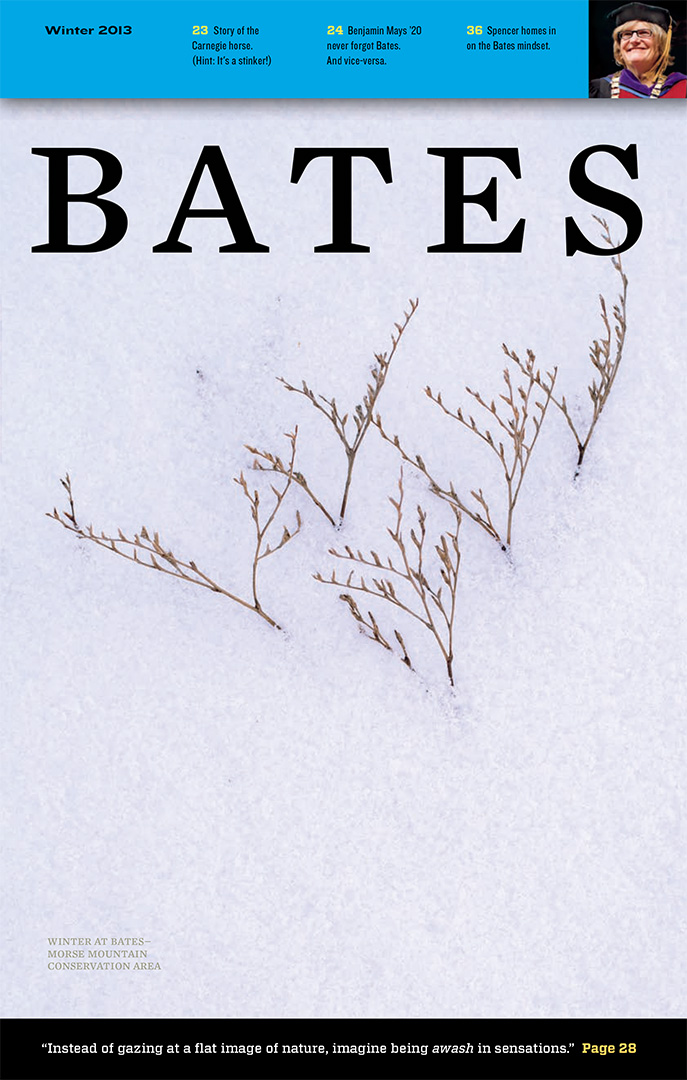
Preamble: Summer 2010
Questions? Comments?
Perhaps it was in ancient Egypt when a teacher first jotted “awkward” and “lacks coherence” on a sheet of papyrus, sending a student on a long, sad walk along the Nile. Ever since, professors’ comments on student papers have carried real power.
At a recent campus gathering of the Consortium on High Achievement and Success, professors and writing professionals from a number of liberal arts colleges discussed how writing assignments, including the practice of commenting on student papers, create conversations that make a student feel connected to college.
(But not always. One student presenter at the gathering recalled the stark feedback on her very first Bates paper. “I felt I had already failed,” she said, adding that professors can do a better job explaining their disciplines’ writing styles.)
At Bates, professors tend to accept hard copies of papers and make comments by hand, says Director of Writing Hillory Oakes. She’s encouraging professors to accept papers electronically and make their comments electronically, a practice she admits is “less common at Bates than at comparable schools,” though she doesn’t know why.
E-commenting, she adds, “fosters a sense of conversation between the student-writer and the faculty-reader that crammed handwriting scribbled in a margin can’t,” she says.
Meanwhile, the old-school method has loyalists like Margaret Soltan, an English professor at George Washington who writes the blog “University Diaries”. Handwritten comments “confirm the authenticity” of a professor’s presence in a student’s life. “This professor and no other…did the student the honor of reading, thinking about, and writing directly to the student, in the professor’s own ink, in the professor’s personal scrawl, on the student’s own paper.”
When a student submits a paper, it feels like an offering to the gods. And when the clouds part for the sun, you feel it forever. The poet Pamela Alexander ’70 will always remember this comment from the late Werner Deiman: “This paper coruscates.” (Look it up; she and I had to.)
A friend remembers a professor charitably expressing how he saw evidence of promise in a sequence of papers that otherwise regressed. “He could have justifiably blown me away with a single sentence but instead he chose kindness,” said my friend.
I arrived in college armed with the literary equivalent of a musket and black powder. I wrote with some power, a style partly picked up from Boston Globe sportswriters like Ray Fitzgerald, and my aim was sometimes off. I’d write about Hedda Gabler like a Globe columnist, humping one note and stuffing random metaphors throughout the paper like toys plucked from a crane game in the vestibule of Wal-Mart.
The nadir, or zenith, was using a Buffalo Springfield lyric to define solipsism for a Victorian novel class (or was it Romantic poetry?): “My head was the event of the season.” Over time, professors’ comments helped me calibrate my writing style.
Handwritten comments aren’t for everyone. Sociology professor Sawyer Sylvester makes extensive editing marks on papers but eschews long written comments because “my handwriting is atrocious. For the student, it would be an exercise in translation,” he says. “Instead, I’ll ask them to come to my office to talk about the paper.”
How old-school.




